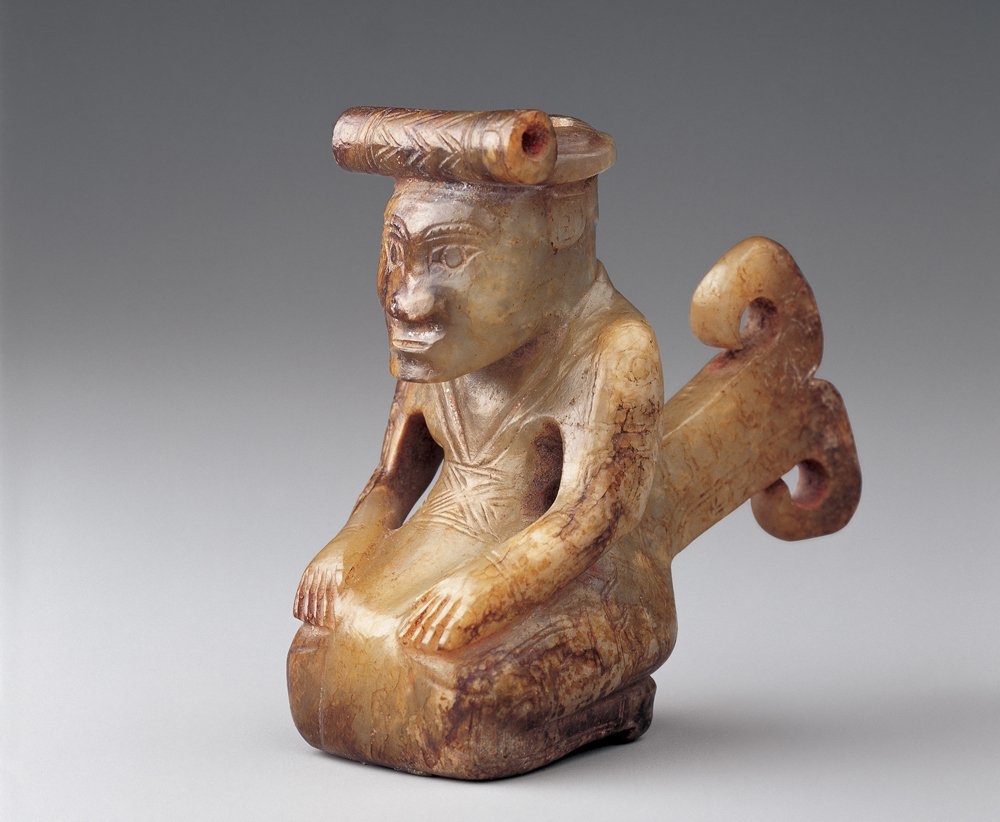Columbia College | Columbia University in the City of New York
Ai Weiwei on a Shang Dynasty figure from the tomb of Fu Hao

Shang Dynasty jade.
1300-1046 BCE. China, Henan Province, Anyang Jade, height 2.75 in. (7cm)
COURTESY NATIONAL MUSEUM OF CHINA, BEIJING
Growing up I really only saw one piece of jade — a seal given to my father before he went into exile that had five characters on it: “If you know how to endure hardship, you might find the way.” He later tried to smooth down the characters for fear the words would give him away. It wasn’t until 1993, when I moved back to China from the U.S., that I really started going to antiques markets to buy jade. Beijing has an ocean of antiques. Now I probably have one of the largest jade collections.
This kneeling figure comes from the tomb of Fu Hao, the most complete archaeological discovery made by the Chinese government, undisturbed by tomb thieves. Fu Hao was a remarkable military leader, maybe the most powerful female ruler in that period of Chinese history. Archaeologists found 755 jade pieces in her tomb, which speaks to her status. Jade is a very hard stone, so think about the amount of time and energy needed to carve these pieces — this incredible manpower.
Some people believe this small carving represents Fu Hao herself, but I believe it’s more mythological than memorial in function — a ritual object related to a higher power. The piece protruding from her back looks like a fishtail, which would mean she’s a god or ghostlike figure. In the Shang Dynasty, you often saw depictions of humanlike figures with a dragon’s head or a fish’s tail. They are images of transformation. The kneeling position is common, but the tail and headdress are unique; they don’t repeat in thousands of objects that come later.
Jade carries such weight in Chinese culture that every dynasty has used it. In the Chinese language, there are a few hundred words just to describe the qualities of jade, whether black, fine, small, or transparent. This figure is an example of white jade, so it has this feeling of translucency and softness. When you touch it, it’s extremely smooth, like silk.
Excerpt from “Ai Weiwei on a Shang Dynasty jade from the tomb of Fu Hao” published in It Speaks to Me: Art That Inspires Artists (DelMonico Books-Prestel) © 2019 Prestel Verlag, Munich, Texts © Jori Finkel. Reprinted by permission of DelMonico Books-Prestel.
Issue Contents
Published three times a year by Columbia College for alumni, students, faculty, parents and friends.
Columbia Alumni Center
622 W. 113th St., MC 4530, 6th Fl.
New York, NY 10025
212-851-7852
cct@columbia.edu
Columbia Alumni Center
622 W. 113th St., MC 4530, 4th Fl.
New York, NY 10025
212-851-7488
ccalumni@columbia.edu

